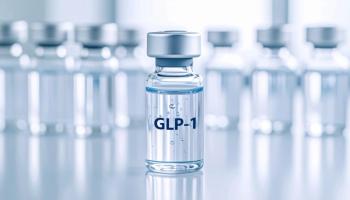
Pharmacy Practice in Focus: Health Systems
- September 2019
- Volume 8
- Issue 5
What Are the Newest Breast Cancer Treatment Options?
Cyclin-Dependent Kinase 4/6 Inhibitors, Margetuximab, Trastuzumab Deruxtecan, and Tyrosine Kinase Inhibitors Have Shown Promising Results
Breast cancer, affecting primarily women, is one of the most common cancers with increasing survival rates, yet treatment remains an area for improvement.1 As of 2019, female breast cancer has the highest rates of new diagnoses and is the second highest in number of cancer-related deaths in women, after lung cancer (figure 1).2 About 1 of every 8 women will be given a diagnosis of some form of breast cancer during their lifetimes, with more than 268,000 estimated cases in 2019.3 About 42,000, or 16%, of these cases will result in mortality, based on CDC estimates.1
The need for new and advanced therapies remains a focus to reduce fatalities from this disease.
EPIDEMIOLOGY
CDC data show that African American and Caucasian women have similar frequencies of breast cancer development, whereas Asians/Pacific Islanders, Latinos, and Native Americans have a lower rate of occurrence.2 Yet breast cancer can occur in any patient, regardless of age or race. With increasing patient age, the incidence of new breast cancer cases increases as well. Women 65 years and older showed an increased incidence, with the highest percentage found in patients between 70 and 74 years.2 Meanwhile, men have a 0.1% chance of developing breast cancer.3
PATHOPHYSIOLOGY
Cancer progression occurs when normal, epithelial cells transform into malignancy. These cells often form a tumor and calcify without metastasis, but upward of 50% of tumors can progress to invasive disease if untreated.4 Breast cancer, like most neoplasms, is caused by cellular DNA abnormalities, and identifying a specific cause is difficult. Breast cancer can be attributed to certain risk factors, such as early menstruation, environment, genetics, and late menopause. However, most patients who develop a malignancy will never definitively know the etiology of their disease.5
Breast cancer pathophysiology is classified in one of 2 ways: invasive or noninvasive carcinoma.4 Invasive carcinomas represent up to 85% of all breast cancer cases. Frequently, metastasis to axillary lymph nodes and various secondary sites occurs prior to disease detection, increasing the risk of patient mortality.4 Breast cancer may present as changes in breast shape or size, erythema, nipple discharge, skin dimpling on the breast, or skin edema around the site of tumor growth.6 Noninvasive breast cancer may occur in up to 15% of all patients.
TREATMENT
As with most malignancies, treatment options are individualized to the patient’s therapeutic needs (figure 2).4 However, standards of practice outlined by the National Comprehensive Cancer Network show that patients have improved outcomes with early detection and treatment.7,8 Patients with noninvasive disease or small tumors are recommended for surgery to remove malignant tissue and the surrounding margins.7,8 Conversely, patients with large tumors or rapidly progressive disease will receive more aggressive and multimodal therapy. Chemotherapy with poorly tolerated agents, such as paclitaxel, doxorubicin, platinum-based agents, and hormonal treatment (eg, anastrozole, letrozole, and tamoxifen), and/or in combination with radiation prior to and possibly after breast tissue excision is also a considered therapy course.9 Neoadjuvant (prior to surgery) and adjuvant (postoperative) therapy are approaches used to eliminate malignant cells not visible on imaging. Although these practices have demonstrated efficacy, the oncology community has recently developed more efficacious and well-tolerated regimens.
NEW TREATMENT ADVANCES
Breast cancer treatment options continue to evolve from traditional chemotherapeutic regimens (see table10-13). Margetuximab, a monoclonal antibody in development, has demonstrated promising results in patients with human epidermal growth factor receptor 2 (HER2)—positive breast cancer. Similar to trastuzumab (Herceptin), margetuximab is thought to target the HER2 receptor but also invoke stronger immune responses, along with increased cell-mediated cytotoxicity through high-affinity binding to CD16a.10 Based on these results, the FDA has fast-tracked margetuximab for accelerated approval.10
Trastuzumab deruxtecan is another promising anti-HER2 agent. The addition of a topoisomerase inhibitor to trastuzumab has shown increased activity in patients with HER2-positive breast cancer.10 Based on clinical trial data, 43% of patients responded to treatment, with 91% of the sample size demonstrating disease cessation.10 The FDA has also approved the agent for further studies.
Tyrosine kinase inhibitors have emerged as another significant class of anticancer agents. Pyrotinib and tucatinib, both oral medications, have shown superior efficacy in patients with HER2-positive cancer.10 Although patients experienced more adverse events, these agents were able to achieve high response rates as well as antitumor activity in combination with other anticancer medications.10 Both agents are moving forward in clinical trials.
Cyclin-dependent kinase 4/6 (CDK4/6) inhibitors have demonstrated beneficial results in the treatment of metastatic hormone receptor—positive/HER2-negative breast cancer.11,12 The inhibitors act by arresting cell division, preventing cellular protein phosphorylation, and reducing tumor proliferation.11 These agents not only reduce disease progression but may also prolong cancer-free survival.11 Abemaciclib (Verzenio), palbociclib (Ibrance), and ribociclib (Kisqali) are all available CDK4/6 inhibitors.
CONCLUSION
Breast cancer remains a life-changing diagnosis. The complications and treatment outcomes still have opportunities for improvement and refinement. Yet, when identified early, breast cancer is one of the most manageable malignancies. Clinicians must advocate for timely screening with accurate risk stratification to improve early diagnosis and treatment and ultimately outcomes.
Articles in this issue
about 6 years ago
Identify the Responsibilities of a “Designated Person”about 6 years ago
Intravenous Lidocaine Can Treat Acute Painabout 6 years ago
New Antimicrobials Expand Treatment Optionsabout 6 years ago
Balancing Research and Treatment of Rare Diseasesabout 6 years ago
Emphasize Medication Adherence to Patientsover 6 years ago
The Pharmacist's Critical Role in Antimicrobial Stewardshipover 6 years ago
BYO Is Not a Good Idea for Pharmaceuticalsover 6 years ago
Get Set for a Busy Conference SeasonNewsletter
Stay informed on drug updates, treatment guidelines, and pharmacy practice trends—subscribe to Pharmacy Times for weekly clinical insights.











































































































































































































